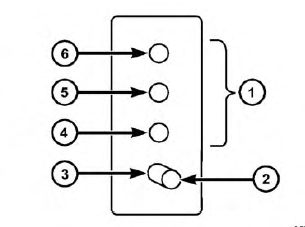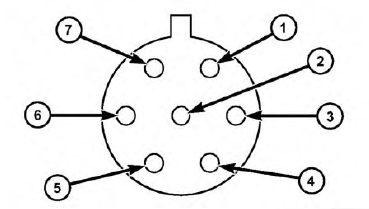Towing Requirements
To promote proper break-in of your new vehicle drivetrain components, the following guidelines are recommended.
CAUTION!
|
Perform the maintenance listed in the "Maintenance Schedule". Refer to "Maintenance Schedule" for the proper maintenance intervals. When towing a trailer, never exceed the GAWR or GCWR ratings.
WARNING!
Improper towing can lead to a collision. Follow these
guidelines to make your trailer towing as safe as
possible:
|
Towing Requirements - Tires
- Do not attempt to tow a trailer while using a compact spare tire.
- Proper tire inflation pressures are essential to the safe and satisfactory operation of your vehicle. Refer to "Tires - General Information" in "Starting And Operating" for proper tire inflation procedures.
- Check the trailer tires for proper tire inflation pressures before trailer usage.
- Check for signs of tire wear or visible tire damage before towing a trailer. Refer to "Tires - General Information" in "Starting And Operating" for the proper inspection procedure.
- When replacing tires, refer to "Tires - General Information" in "Starting And Operating" for the proper tire replacement procedures. Replacing tires with a higher load carrying capacity will not increase the vehicle's GVWR and GAWR limits.
Towing Requirements - Trailer Brakes
- Do not interconnect the hydraulic brake system or vacuum system of your vehicle with that of the trailer.This could cause inadequate braking and possible personal injury.
- An electronically actuated trailer brake controller is required when towing a trailer with electronically actuated brakes. When towing a trailer equipped with a hydraulic surge actuated brake system, an electronic brake controller is not required.
- Trailer brakes are recommended for trailers over 1,000 lbs (453 kg) and required for trailers in excess of 2,000 lbs (907 kg).
WARNING!
|
| CAUTION! If the trailer weighs more than 1,000 lbs (453 kg) loaded, it should have its own brakes and they should be of adequate capacity. Failure to do this could lead to accelerated brake lining wear, higher brake pedal effort, and longer stopping distances. |
Towing Requirements - Trailer Lights And Wiring (If Equipped)
Whenever you pull a trailer, regardless of the trailer size, stoplights and turn signals on the trailer are required for motoring safety.
The Trailer Tow Package may include a four- and sevenpin wiring harness. Use a factory approved trailer harness and connector.
NOTE: Do not cut or splice wiring into the vehicles wiring harness.
The electrical connections are all complete to the vehicle but you must mate the harness to a trailer connector.
Refer to the following illustrations.
 Four-Pin Connector
Four-Pin Connector
1 - Female Pins
2 - Male Pin
3 - Ground
4 - Park
5 - Left Stop/Turn
6 - Right Stop/Turn
 Seven-Pin Connector
Seven-Pin Connector
1 - Battery
2 - Backup Lamps
3 - Right Stop/Turn
4 - Electric Brakes
5 - Ground
6 - Left Stop/Turn
7 - Running Lamps
